We apologize for any translation errors from Italian. Please click here to read the Italian expertise.
The oil on canvas painting represents a market scene in a town in which stands in a dominant position a circular tower of medieval age. The work can be attributed to the Italian Piedmontese painter Carlo Piacenza (Turin, 3 December 1814 - Castiglione Torinese, 1887). Another comparable work, made with oil on a panel, signed and dated in the lower left, is known from Piacenza and portraying a Market at the Tower. The architectural context represented in the latter is the same as the canvas, although there are some small variations. The same goes for the daily life scene described. The painting on panel, now in private collection, is published by Piergiorgio Dragone in « 19th century painters in Piedmont. Art and figurative culture. 1830-1865 », published by the CRT Bank of Turin. As can be seen from the comparison between the two works, the tower is the same, as the adjacent house on the left.
Some differences can be found by observing the access steps to the environment housed in the tower, perhaps a workshop, as well as the description of the wooden fences to protect the balconies of the house next door. In the version on canvas Piacenza inserts, in the masonry of the tower, a clock surrounded by terracotta tiles and describes in a better state of conservation the buildings that follow each other on the right. The horizontal cut of the canvas also allows the painter an accurate description of the surrounding environment. On the right a street of the town disappears on the horizon, while in the foreground, on the widening where the market is located, there is a wall surrounding a lush private garden. In both works the cloths spread out, some pots in terracotta with ornamental plants, the branch of a green plant that climbs the tower, as well as the inhabitants intent in their mercantile activities, give back the experience of the country and liven up the composition.
Through the comparison with some documents found, it is possible to identify the exact place represented in the paintings: it is one of the medieval towers of the town of Giaveno, near Turin in the north of Italy.
There is an etching signed by Francesco Mennyey (Turin 1889 - 1950), an internationally known painter and engraver in the first half of the 20th century, which represents the same view described by Piacenza. Mennyey signs and titles engraving “Giaveno”.
The comparison with the engraver, made around 1920, allows not only to ascertain the place of the painting in question, but also to show that the clock that Piacenza describes in the canvas is an addition of invention that the artist thought perhaps necessary to enrich the simple medieval architecture, balancing the whole with a chromatic appeal in the tones of red. The tower represented is still present today. Giaveno, a municipality not far from Turin and located at the mouth of the Val Sangone, has very ancient origins. The first settlement dates back to Roman times, but it gained importance in the central centuries of the Middle Ages, when it was subjected to the lordship of the powerful abbots of the Sacra di San Michele. In 1209, thanks to a donation by the Count of Savoy Thomas I, the abbots of San Michele fortified the square with a city wall and built a castle. In 1347, the abbot Rodolfo of Mombello raised the walls, interspersed with five circular towers. The perimeter of the Abbey Citadel is still quite readable in the current Via Roma. Three towers, although modified over the centuries, have survived the walls. A circular plan, made of mortar and river stones, they have at the top a decorative band in brick that forms a geometric design with small arches. Some historical photographs indicate the opening and closing of some windows and the evolution of the site.
Carlo Piacenza was born in Turin in 1814 and trained at the Accademia Albertina, a pupil of Cesare Biscarra and Pietro Fea. After a period of apprenticeship at the Bernese watercolourist Juillerat, he began to paint subjects inspired by the Piedmontese and Aosta countryside, with the intention of portraying the "true" of nature. Debuts to the Promotrice of Turin in 1843 presenting some views characterized by a calm naturalism and a romantic and idyllic intonation, sometimes melancholy. The gifts of a naturalist painter are intensified with the luministic research that the setting can offer. Piacenza thus achieves high results through its own and personal modulation of light, obtaining critical consents to the Turin exhibitions in which it regularly participates, in particular those held at the Promotrice and at the Circle of Artists. He dedicated himself to private teaching and had as students the children of Duke Ferdinand of Genoa, Thomas and Margaret of Savoy. Since 1856 he has also held the Chair of Drawing at the Turin Military Academy, which held until his death in 1887. The painting of Carlo Piacenza continues, alongside that of his friend and colleague Angelo Beccaria, a vein of serene landscape that had distinguished the first half of the 19th century. Piacenza, however, is innovative in the artistic landscape of Piedmont for a marked attention to concrete moments of daily news, thus giving connotations of verism to his works.
The canvas that is the subject of this study appears to be significant within the artistic path of Piacenza. The true description of the landscape is enlivened by the market scene and in which the chromatic research finds ample development in the rendering of the zones of shadow and the warm summer light. The work is also a document of historical interest for the architectural events that have affected the town of Giaveno, testimony of a place today strongly transformed by urban adaptations.


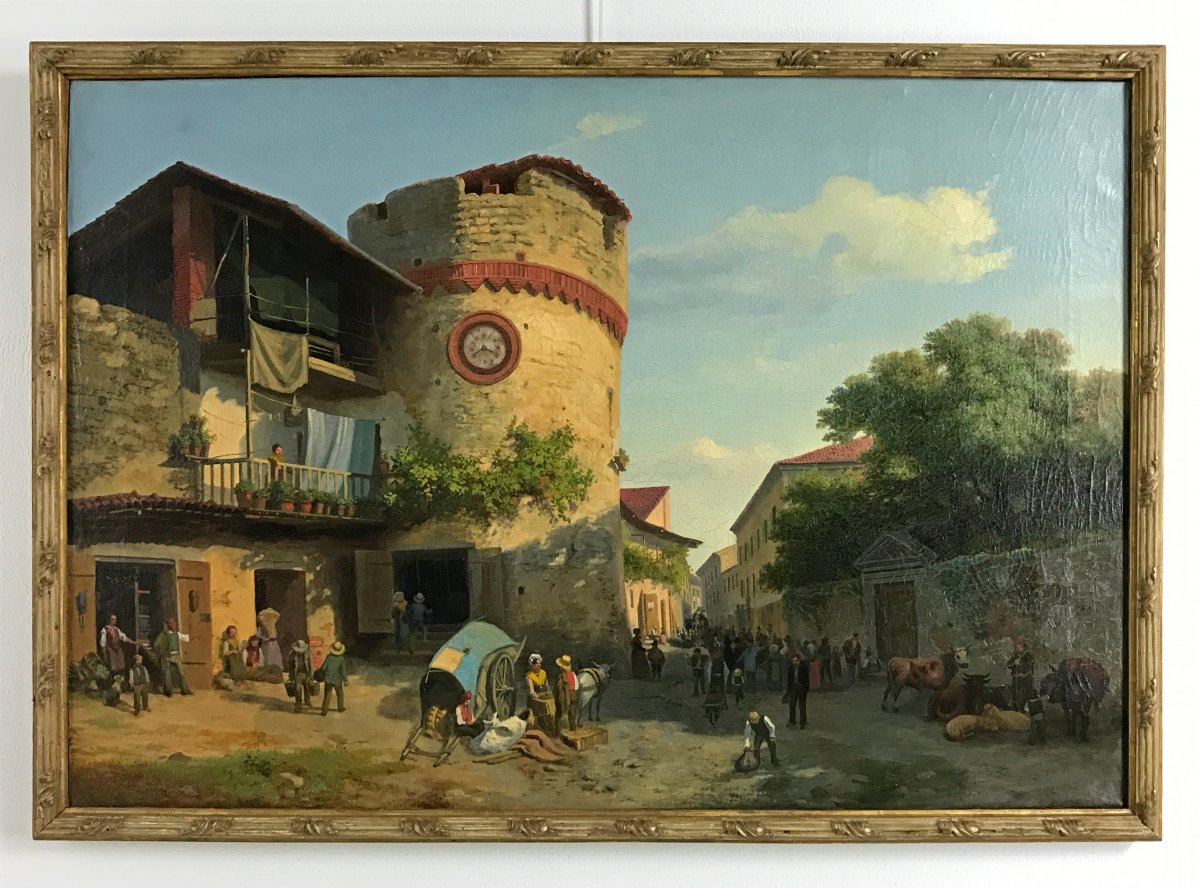
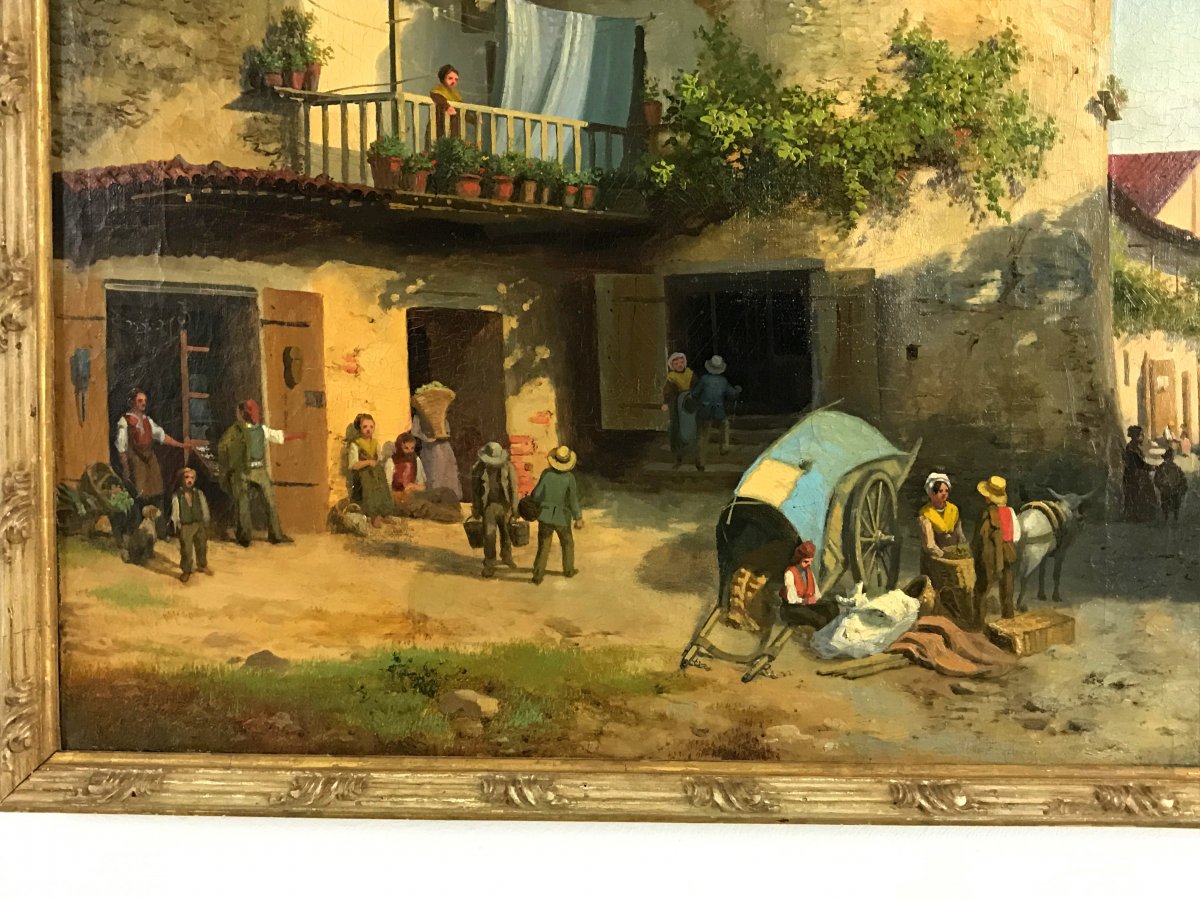
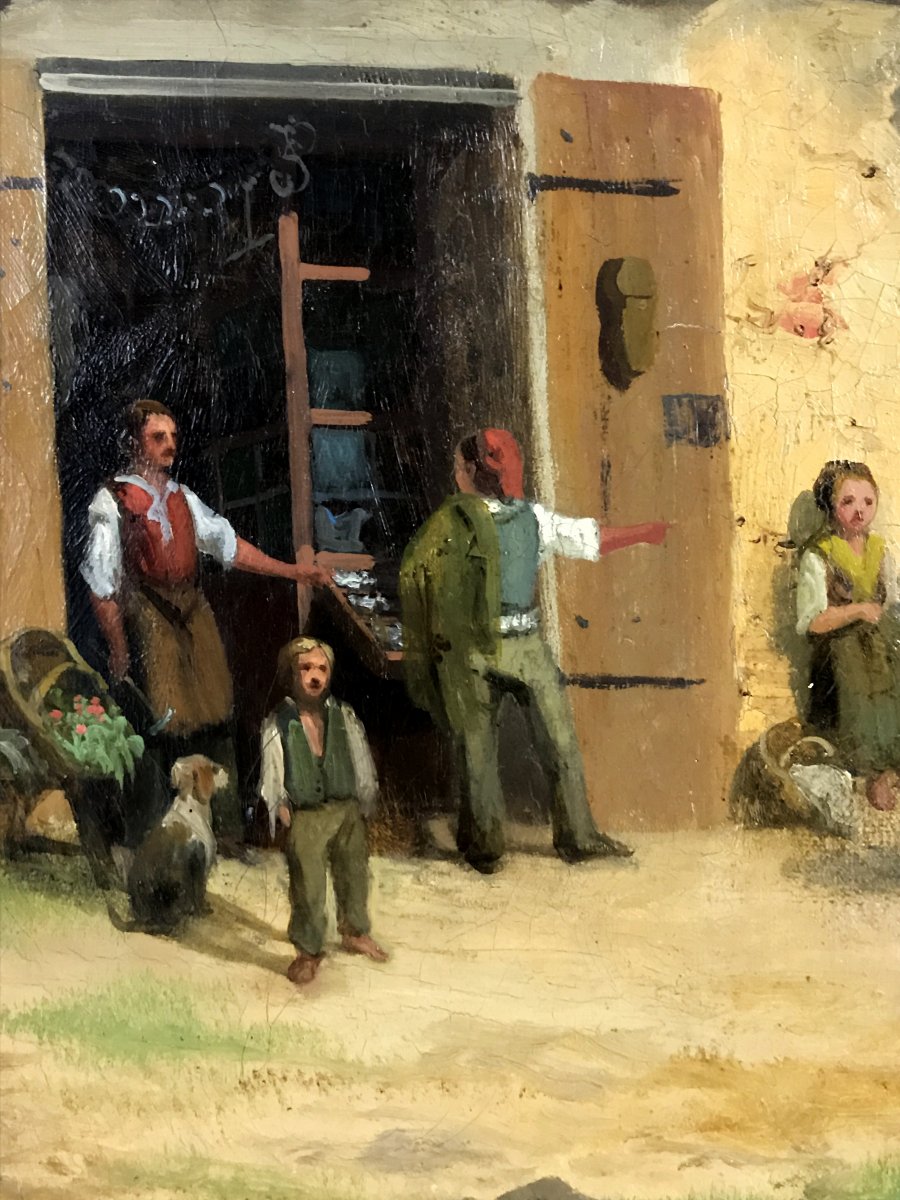

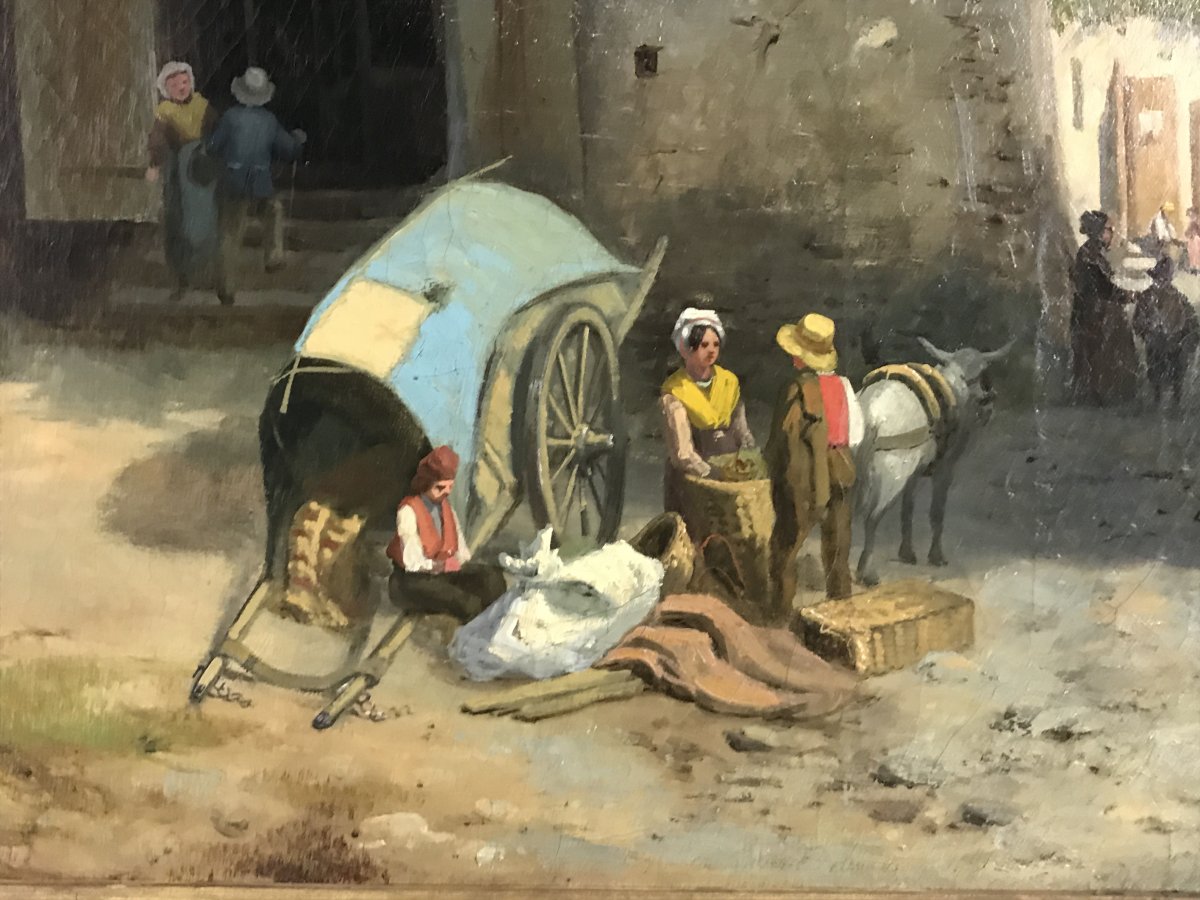

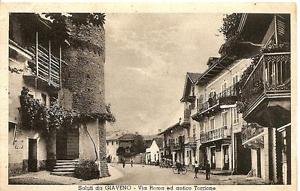





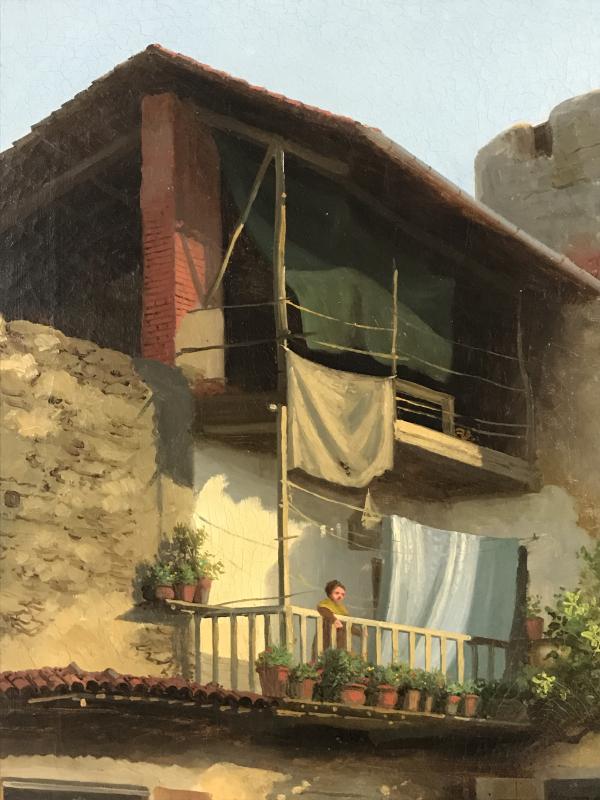






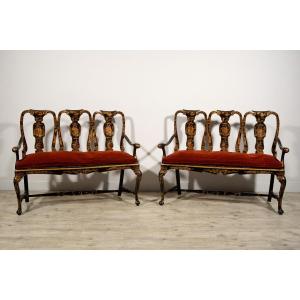



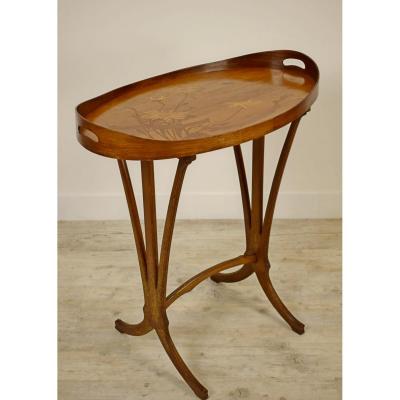
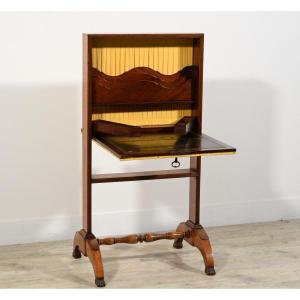



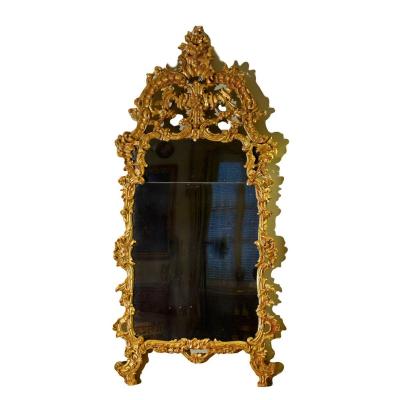
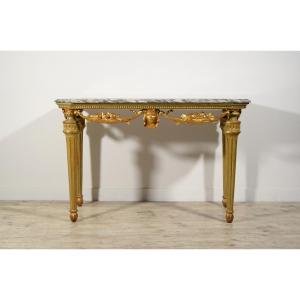


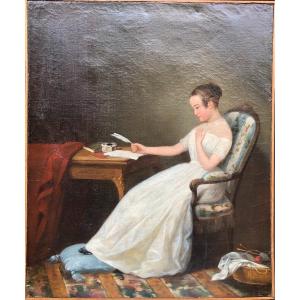





 Le Magazine de PROANTIC
Le Magazine de PROANTIC TRÉSORS Magazine
TRÉSORS Magazine Rivista Artiquariato
Rivista Artiquariato